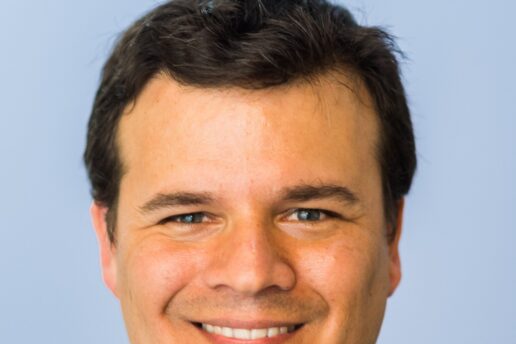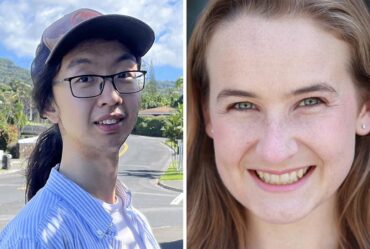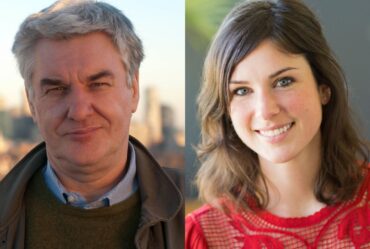
The 2021 Max Planck-Humboldt Research Award awarded to Pablo Jarillo-Herrero for new quantum material
Honored for his work on two-dimensional quantum materials.
September 28, 2021 | Press Release – Max-Planck-Gesellschaft
The Max Planck-Humboldt Research Award 2021 goes to Pablo Jarillo-Herrero for his work on two-dimensional quantum materials. The physicist from the Massachusetts Institute of Technology (MIT) discovered intriguing quantum mechanical effects in stacked layers of graphene or similar materials. The Max Planck-Humboldt Research Award is endowed with 1.5 million euros over a period of five years. Jarillo-Herrero will use this funding to start an innovative research project at the Max Planck Institute for Solid State Research and the University of Stuttgart. This year’s Max Planck-Humboldt Medal will be awarded to Anastassia Alexandrova from the University of California, Los Angeles, and to Sumit Gulwani from the Microsoft Corporation in Redmond. They will each receive prize money in the amount of 60,000 euros in connection with the medal. Alexandrova is being recognized for her work on rational catalyst development and the understanding of functional materials. Gulwani is honoured for his significant contributions to software development, for example, automatic program synthesis. His findings have led, among other things, to advanced computer-based teaching methods. Due to coronavirus precautions, this year’s awards will be presented during a ceremony in Berlin on November 3, 2022 together with the 2022 awards.
“The success of research in Germany and throughout the world is based on international networking. Only if scientists from all over the world join forces to develop solutions together, we will be able to tackle the major challenges of our time, such as climate change or COVID-19. The Max Planck Humboldt Research Award makes a major contribution to this by enabling scientists from German and international research institutions to collaborate especially closely for a period of five years,” says Federal Research Minister Anja Karliczek. “How important this is can be seen in the research findings of Pablo Jarillo. His work opens up paths towards new components for improved magnetic resonance tomography in medical applications or for quantum computing. Quantum technologies in particular have enormous potential for the economy and our society – and we want to tap into that. This is why we are particularly pleased about this cross-border cooperation in cutting-edge research.”
“In quantum science, research is being conducted on basic principles that will pave the way for ground-breaking future technology. Jarillo-Herrero’s innovative work on quantum materials is a prime example of how research makes us continually rethink our view of the world. His research has the potential to make electronic components more efficient and computers faster and to increase the superconductivity of materials”, says Hans-Christian Pape, President of the Alexander von Humboldt Foundation.
“With his research on two-dimensional quantum materials, Jarillo-Herrero has opened up a new field of research in which many fundamental insights for both quantum science and quantum technology can be expected”, says Martin Stratmann, President of the Max Planck Society. “We are very pleased about the cooperation with Pablo Jarillo-Herrero in this promising field made possible by the Max Planck-Humboldt Research Award”.
Quantum materials for sensors, efficient electronics, and quantum computers
Some of the quantum materials that Pablo Jarillo-Herrero is researching are already visually striking – due to the moiré effect: they consist of two superimposed layers of graphene or similar substances whose atoms form a regular honeycomb pattern. When the layers are twisted against each other, new patterns emerge that have a hexagonal structure like the superimposed layers, but on a larger scale. However, when the layers are rotated against each other, not only the optical patterns of the layers change, but also the physical properties of the systems. In such two-dimensional moiré structures, Pablo Jarillo-Herrero has discovered some effects that have received particular attention in physics in recent years. For example, he has observed that quantum materials can combine both superconductivity and topological properties. Current flows through superconductors without resistance, which has so far been used primarily to generate particularly strong magnetic fields, to measure magnetic fields very precisely in the body, for example, or to perform logical operations in quantum computers. Topological materials, or more precisely topological insulators, conduct electricity only on their surface, while completely insulating it inside. Such materials are of interest for components of future computers and also for quantum computers. The combination of superconductivity and topological properties in moiré superlattices opens up entirely new possibilities, especially since Pablo Jarillo-Herrrero has also found that the superconducting properties can be controlled by an electric field.
In separate experiments, Jarillo-Herrero and collaborators found a genuine two-dimensional magnet. Magnetic order can usually only form when many electrons or atoms carrying a magnetic moment interact in a three-dimensional structure. However, Pablo Jarillo-Herrero has also discovered magnetic order in a single layer of cross-linked chromium and iodine atoms and, moreover, observed how this order changes when multiple chromium iodide layers are stacked on top of each other. His work on two-dimensional structures is helping to better understand magnetism, as well as topological properties and superconductivity. The quantum materials could also be used for particularly sensitive sensors, for energy-efficient electronics or for quantum computers.
In search of new moiré systems
Pablo Jarillo-Herrero studied at the University of Valencia and at the University of California in San Diego. After earning his PhD at the Delft University of Technology and a postdoctoral position at Columbia University, he became an assistant and later associate professor at the Massachusetts Institute of Technology. He has since taken over the Cecil and Ida Green Professorship there. Pablo Jarillo-Herrero has already received numerous awards for his research, including both the Oliver E. Buckley Prize in 2020, the most prestigious prize for solid-state physics in the United States, and the Wolf Prize in Physics.
Pablo Jarillo-Herrero will conduct his research project at the Max Planck Institute for Solid State Research in Stuttgart in close cooperation with the University of Stuttgart. He will investigate novel moiré layer systems. This will involve the very precise fabrication of such systems, the development of tuning knobs that can be used to control their properties, and their precise characterization using various methods. For example, he will use a technique that allows live tracking, so to speak, of how the angle between two superimposed layers affects their electronic properties.
A pioneer of systematic catalyst design and materials understanding
Anastassia Alexandrova, who conducts research at the University of California at Los Angeles, will receive the Max Planck-Humboldt Medal for her work in theoretical chemistry, in particular her studies on the catalysis of chemical reactions and materials science. Among other things, the chemist has developed methods that simulate how a catalyst behaves during a chemical reaction, which structures mediate between the reaction partners in detail, and how the reaction conditions, such as temperature, pressure and concentration of the starting materials, influence the states of the catalyst and this interaction. In this way, she demonstrated that the catalyst surface restructures during a reaction and that it is precisely structural details that are rarely present in the catalyst that are crucial for the course of the reaction. In addition, Anastassia Alexandrova has developed dynamic models of how the type of chemical bonding influences the mechanical, electronical and thermodynamical properties of materials. She also made significant contributions to understanding and modeling intramolecular electric fields in enzymes and their role in enzymatic catalysis.
Honoured for automatic programming and computational education
Sumit Gulwani, a scientist at Microsoft Research in Redmond, will also receive the Max Planck-Humboldt Medal. With a background in program analysis and artificial intelligence, he shaped the field of program synthesis, which emerged around 2010. The computer scientist developed algorithms that can efficiently generate computer programs from very few input-output examples, natural-language-based specification, or from just the code and data context. His work made it possible for non-programmers to programme tedious, repetitive spreadsheet tasks, and enabled productivity improvements for data scientists and developers for data wrangling and software engineering tasks. Recently, Sumit Gulwani has also been using the tools of program synthesis for computer-aided education of pupils and students. Starting from the automatic correction of learners’ work in programming education, he further evolved this line of work to detect misunderstandings and give learning feedback and grades, also in subjects like mathematics and language learning.


